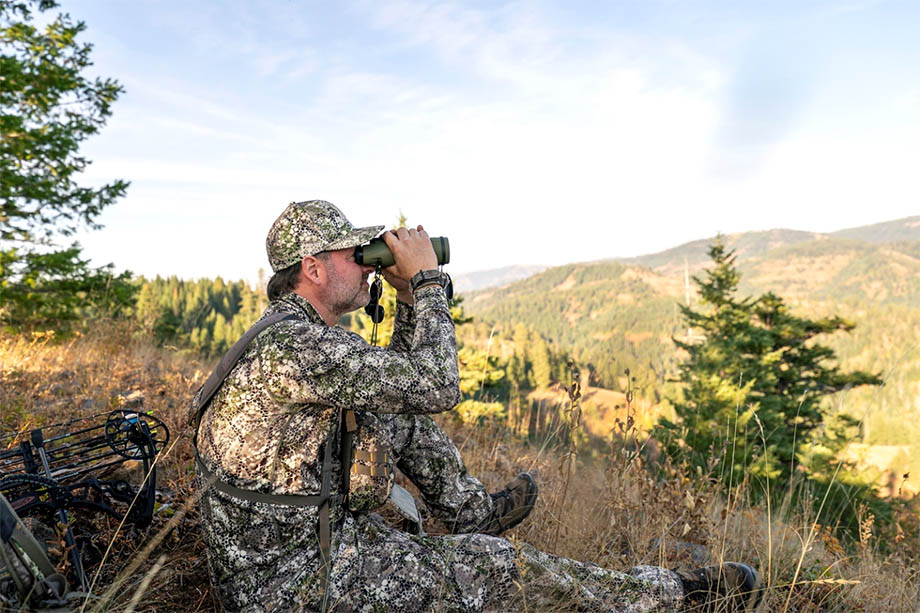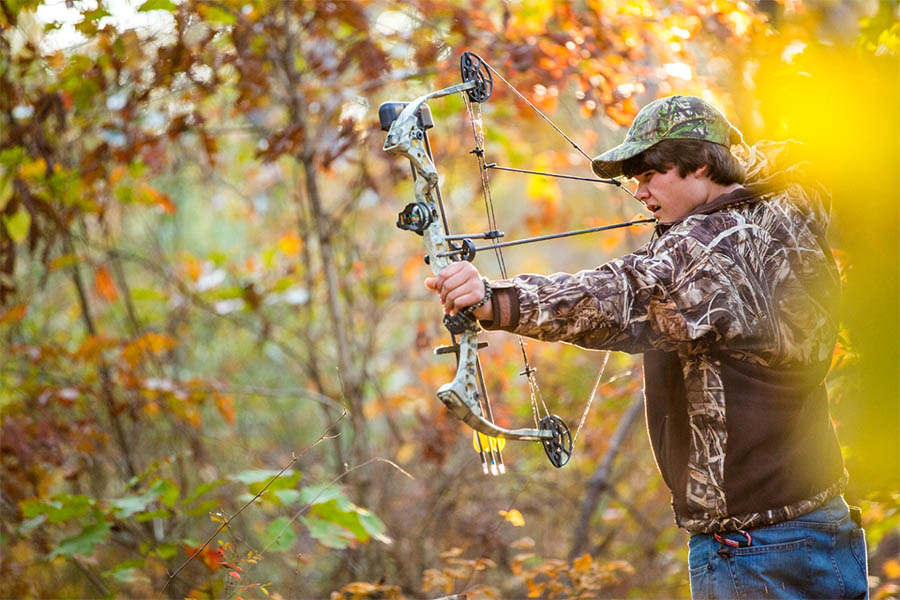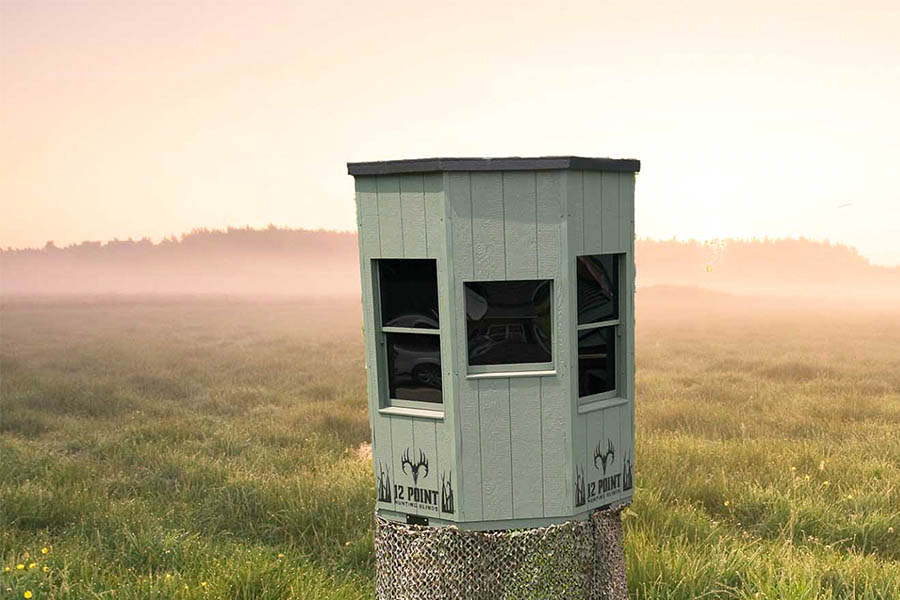Spot-and-Stalk Hunting: Finding and Tracking Prey from a Distance
Spot-and-stalk hunting is a time-honored method of pursuing game, requiring hunters to locate and track their prey from a distance before closing in for a shot. It is a challenging and exhilarating approach that demands a combination of stealth, patience, and skill. This hunting technique holds particular appeal for those seeking a more immersive and intimate hunting experience, as it allows hunters to observe and understand the natural behavior of the game.
The essence of spot-and-stalk hunting lies in the art of finding and tracking prey without alerting them to the hunter’s presence. This requires a keen understanding of the hunting environment, careful observation, and the effective use of optics and equipment for spotting. Binoculars, spotting scopes, and range finders become invaluable tools in the hunter’s arsenal, aiding in the identification and assessment of potential targets from afar.
Once a target is spotted, the hunter transitions into the stalking phase. This involves navigating the terrain with utmost stealth, paying close attention to wind direction and utilizing camouflage and concealment techniques. Interpreting animal behavior and signs, such as tracks, feeding areas, and vocalizations, further guides the hunter’s approach.
Shooting positioning and accuracy are crucial elements in spot-and-stalk hunting, demanding a stable shooting platform and an understanding of bullet trajectory. Ethical considerations, such as selective targeting and adherence to hunting regulations, also play an essential role in maintaining responsible and sustainable hunting practices.
In this guide, we will explore the intricacies of spot-and-stalk hunting, providing insights into the techniques, equipment, and strategies necessary for success. Whether you are a seasoned hunter looking to refine your skills or a beginner eager to embark on your first spot-and-stalk adventure, this resource will serve as a valuable reference to enhance your hunting pursuits and deepen your appreciation for the pursuit of game from a distance. Learn how to stalk prey and more below.
Spotting Prey
Spotting prey is the first step in the spot-and-stalk hunting process and requires a combination of knowledge, observation, and the right equipment. Understanding the hunting environment and terrain is crucial for effectively spotting game from a distance. Familiarize yourself with the topography, vegetation, and natural features of the area you are hunting in. This knowledge will help you anticipate where animals are likely to be found.
Optics play a significant role in spotting prey. Binoculars and spotting scopes are essential tools for scanning the landscape and identifying potential targets. Invest in high-quality optics that provide clear and detailed images, allowing you to spot game even at extended distances. It is advisable to choose binoculars with a magnification power between 8x and 10x for a good balance of field of view and image stability.
In addition to optics, range finders are valuable devices for determining the distance between you and your prey accurately. Knowing the range is essential for making precise shots and adjusting for bullet drop or arrow trajectory. Take the time to practice using your range finder to become proficient in quickly and accurately measuring distances.
Camouflage and concealment techniques are vital for remaining undetected by your prey while spotting them. Dress in appropriate camouflage patterns that blend with the natural surroundings. Pay attention to concealing your silhouette, minimizing movement, and avoiding shiny objects that may catch the sunlight and reveal your presence.
Stalking Prey
After successfully spotting your prey from a distance, the next phase of spot-and-stalk hunting is stalking. Stalking requires stealth, as you maneuver closer to your target without alerting them to your presence. Several key factors contribute to a successful stalk.
First and foremost, understanding wind direction is critical. Animals possess a keen sense of smell, and any unnatural scent carried by the wind can quickly give away your position. Constantly assess the wind’s direction and adjust your approach accordingly. Consider using wind-checking devices or applying scent-eliminating products to minimize your odor.
Moving quietly is another essential aspect of stalking. Be mindful of your footsteps and avoid stepping on branches or dry leaves that may produce noise. Slow, deliberate movements help you blend with your surroundings and reduce the chances of alarming the game.
Observing animal behavior and signs can provide valuable insights during the stalk. Look for tracks, trails, or droppings that indicate recent activity. Take note of feeding and bedding areas, as well as the direction in which the animals are moving. By studying their behavior, you can predict their path and plan your approach accordingly.
Listening to vocalizations and calls can provide vital clues about the animals’ proximity and disposition. Pay attention to alarm calls or mating sounds that may alert you to their presence. Familiarize yourself with the vocalizations of the specific species you are hunting to better interpret their meaning.
Throughout the stalk, remain patient and adapt to changing circumstances. There may be times when you need to pause, observe, and wait for the perfect opportunity to continue. Patience, combined with careful movement and an understanding of animal behavior, increases your chances of getting within range for a successful shot.
Shooting Positioning and Accuracy
Once you have successfully stalked within range of your prey, it is crucial to establish a stable shooting position and ensure accuracy for a clean and ethical shot. Several factors contribute to achieving a precise and effective shot during spot-and-stalk hunting.
Finding a stable shooting position is essential. Look for natural supports such as rocks, trees, or logs that can provide stability for your firearm or bow. If such supports are unavailable, consider utilizing shooting sticks or bipods to steady your aim. These tools can help minimize movement and improve your shooting accuracy.
Understanding bullet trajectory or arrow flight is crucial for accurately compensating for distance. Practice estimating distances and learn how to adjust your aim based on the trajectory of your ammunition or arrows. Knowing the capabilities and limitations of your equipment allows you to make precise adjustments when taking the shot.
Developing marksmanship skills through consistent practice is vital for spot-and-stalk hunting. Regularly engage in target practice and simulate real hunting scenarios to improve your shooting proficiency. Focus on shot placement to ensure a quick and ethical kill, minimizing suffering for the animal.
Incorporate breathing and trigger control techniques to enhance your shooting accuracy. Take slow, deep breaths, and release the trigger smoothly without jerking or flinching. A controlled trigger squeeze contributes to maintaining a steady aim and increasing shot accuracy.
Prioritize safety at all times. Be aware of your surroundings and ensure there are no obstacles or other individuals in the line of fire. Always adhere to hunting regulations and follow ethical hunting practices.
Ethical Considerations
Spot-and-stalk hunting, like any form of hunting, carries ethical considerations that hunters should be mindful of to ensure responsible and sustainable practices. Respecting wildlife and their habitat is paramount to preserving natural ecosystems and maintaining healthy populations. Here are some important ethical considerations to keep in mind:
Selective targeting is a fundamental principle of ethical hunting. It involves choosing individual animals that meet specific criteria, such as age, sex, or size, while allowing others to thrive and contribute to the population. This practice promotes wildlife conservation and maintains a balanced ecosystem.
Adhering to fair chase principles is another crucial aspect of ethical hunting. Fair chase implies giving animals a reasonable chance to escape and exhibit their natural behaviors. It involves pursuing game in a manner that respects their instincts and abilities, rather than employing unfair advantages or techniques that diminish the hunting experience.
Respecting hunting regulations and laws is essential for ethical hunting. Familiarize yourself with local, state, and national hunting regulations, including bag limits, licensing requirements, and seasonal restrictions. These rules are put in place to ensure sustainable hunting practices and protect wildlife populations.
Minimizing suffering is a core ethical consideration in hunting. Strive for quick and humane kills by practicing shot placement and using appropriate ammunition or arrows that provide sufficient stopping power. Follow-up shots may be necessary to ensure a swift and ethical harvest if the first shot does not result in an immediate kill.
Respecting the environment is crucial during spot-and-stalk hunting. Avoid causing unnecessary disturbance to the ecosystem by minimizing your impact on flora and fauna. Leave no trace by properly disposing of waste, respecting private property boundaries, and avoiding damage to the natural surroundings.
SPOT-AND-STALK HUNTING TIPS AND STRATEGIES FOR SUCCESS
Achieving success in spot-and-stalk hunting requires a combination of preparation, skill, and adaptability. Here are some valuable hunting tips and strategies to enhance your chances of a successful hunt:
Pre-hunt preparation and scouting: Before heading out, thoroughly familiarize yourself with the hunting area. Study maps, understand the terrain, and identify potential locations where game is likely to be found. Conduct scouting trips to observe animal patterns, feeding areas, and travel routes.
Patience and persistence: Spot-and-stalk hunting often requires extended periods of observation and waiting. Exercise patience and be prepared for the long haul. Stay committed to the pursuit, as success can come when you least expect it.
Teamwork and communication: Hunting with a partner or a team can be advantageous. Coordinate your efforts, communicate effectively, and share observations to increase the chances of spotting and stalking game successfully. Assign roles and work together to maximize efficiency.
Adapting to changing conditions and situations: Nature is unpredictable, and hunting conditions can change rapidly. Be flexible and adapt your approach accordingly. Adjust to changes in weather, wind direction, and animal behavior to make the most of each hunting opportunity.
Stay physically fit: Spot-and-stalk hunting often involves traversing challenging terrains. Maintain a level of physical fitness that allows you to move quietly and efficiently. Regular exercise and conditioning will enhance your endurance and overall hunting experience.
Practice shooting in realistic scenarios: Replicate hunting situations during target practice. Practice shooting from different positions, distances, and angles. Simulate shooting opportunities from behind cover or in varied lighting conditions to simulate real hunting scenarios.
Learn from experience: Every hunting trip provides valuable lessons. Analyze your successes and failures to identify areas for improvement. Keep a journal to record observations, strategies, and tactics that worked well for future reference.
Wrapping Up
Spot-and-stalk hunting offers a thrilling and challenging approach to pursuing game from a distance. Through effective spotting, stalking techniques, and accurate shooting, hunters can experience a deep connection with nature and the animals they pursue. By practicing responsible and ethical hunting, respecting wildlife and their habitat, and adhering to hunting regulations, we can ensure the preservation of our natural resources for future generations. Remember to embrace patience, adaptability, and teamwork while enjoying the adventure and excitement that spot-and-stalk hunting provides. Whether you are a seasoned hunter or new to the pursuit, these techniques and principles will help enhance your skills and make your spot-and-stalk hunting experiences more rewarding. Happy hunting!






